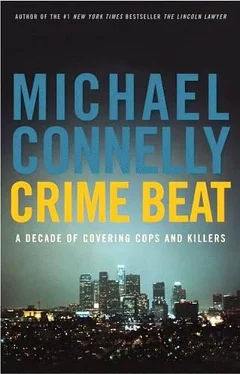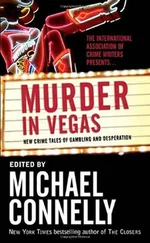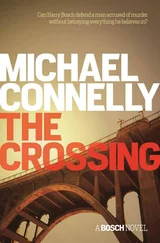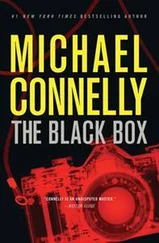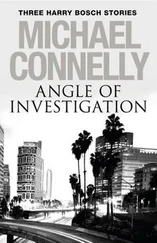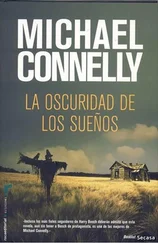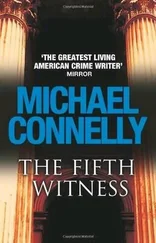Weiss was to go to dinner with his wife, Rose, but first, police say, he planned to call Tarkanian, who was waiting at a Long Beach hotel for word on the negotiations.
Tarkanian never got the call, and the talks would never go further. The Lakers eventually hired another coach.
Weiss was reported missing by his wife, but there was no sign of him until four days later when a security guard spotted his Rolls in the garage of the Sheraton Universal hotel. After Weiss’ decomposed body was discovered and removed, detectives found no clues to what had happened.
Weiss’ wallet and briefcase were gone, but his diamond ring and watch had not been taken. That led police to rule out robbery as a motive. Cooke, Buss and Tarkanian were quickly eliminated as having any involvement. That left police with the mystery.
But the Rolls-Royce, though clean of evidence, generated a lead in the case. Several people who had learned of the slaying in the media called police and said they remembered seeing the distinctive car on the day Weiss disappeared, Orozco says. Through these witnesses, police were able to chart Weiss’ path from Beverly Hills along Beverly Glen Boulevard to Ventura Boulevard and west into Encino.
Mysterious Tall Man
A witness told police that he had seen the Rolls pull to the curb on a street in Encino and a white Cadillac with three men in it stop behind. The witness said Weiss got out of his car and two men – one described as a 6-foot, 6-inch blond – got out of the Cadillac.
The witness said the blond man angrily pointed a finger in Weiss’ face as he spoke to him. After a few moments Weiss got back in his car, the blond man got in the backseat behind him and the third man got in the front. Then the Rolls and the Cadillac drove away.
As detectives delved into Weiss’ background, they became confident that the witness had seen Weiss’ killers. They learned that Weiss maintained a lifestyle that belied his true financial worth. They learned that many of his associates were involved in organized crime.
Orozco says that Weiss had no financial interest in the car dealerships he reportedly owned; he was merely a paid consultant or promotions man. An associate owned the house where he lived in Encino, and his Rolls-Royce was leased.
“When he died, he had some insurance; that was about it,” Orozco says.
Police also began receiving reports from anonymous callers, organized crime informants and Las Vegas law enforcement officers that Weiss was involved with mobsters in Nevada and Florida. The informants said Weiss had run up gambling debts.
Mob-Style Hit
The information convinced police that Weiss had been kidnapped by the three men in the Cadillac and executed in a mob-style hit.
Orozco says he and his partner, John Helvin, traced one of Weiss’ close friends to central Florida, where he had moved immediately after the killing and worked as a car salesman. In exchange for his anonymity, the salesman told the detectives that he knew that Weiss had run up more than $60,000in gambling debts in Las Vegas. To make good on the debts, he had begun flying to Las Vegas and delivering packages of cash laundered in Los Angeles, Orozco says.
Each week, the money came in a brown paper package and was placed in the trunk of Weiss’ Rolls-Royce, the salesman said. Weiss would then fly to Las Vegas and back on the same day. But, the salesman said, Weiss was skimming – stealing money from the deliveries – and had been caught and warned to stop.
Orozco says detectives theorized that Weiss had not heeded the warning and was killed. They began tracking the phone records of Weiss and some of his associates. They documented connections to organized crime figures and went to Las Vegas and New Port Richey, Fla., to serve search warrants on the homes of people believed associated with the killing.
Search Fails
In Las Vegas, the detectives got a search warrant from local authorities, but the house they planned to search was empty on the morning they arrived. Orozco speculated that the suspect had been tipped off and moved
out.
In New Port Richey, things also went poorly.
Orozco and Helvin arrived late one afternoon and drove by the house, which they planned to search the next day after obtaining a warrant from local authorities. The house belonged to a man suspected of being an “enforcer” with an organized crime family, Orozco says. The detectives noticed a boat in the canal out back and a black Camaro parked in front, indicating that the occupants had not been tipped to the search and were still living there.
The next morning, Orozco says, he glanced out the window of his motel room and saw the same black Camaro in a parking lot across a canal next to the motel. A man was sitting behind the wheel of the car, watching the motel.
“We flipped a coin to see who’d go out the door first,” Orozco says.
Helvin lost. They drew their weapons and with Orozco covering, Helvin quickly went down to the lobby. Orozco followed, but by the time they got into a rental car, the black Camaro was gone.
Orozco says he and his partner were turned down for the search warrant because they did not have enough evidence that the suspected enforcer had been involved in the Weiss killing.
Orozco says he was paranoid when he returned to Los Angeles.
Not knowing how information about their movements had gotten to the targets of the investigation, he and Helvin stopped talking about the case to some officers inside and outside the department. Orozco says that when a retired Los Angeles detective inquired about the case, he gave the man false information. A few days later, Orozco says, an organized crime informant called with the same wrong information.
“We didn’t talk to anyone after that,” Orozco says. “We just came in, did our work and went home. If I went out of town on the case, I only told my lieutenant.”
Orozco and Helvin continued to work full-time on the Weiss killing for two years. At least three men they investigated would become the victims of apparently unrelated slayings.
Jewel Thief
One of them was Jeffrey Rockman, whose name was found on a piece of paper in Weiss’ office. Police learned that Rockman, 33, was a jewel thief who worked for a Canadian organized crime syndicate and was believed to have sold stolen property to Weiss.
But police did not find Rockman in time to question him about the killing. On April 29, 1980, he was shot to death in his Marina del Rey town house. Orozco says detectives learned that Rockman’s real name was Anthony Starr and that he had been given the new identity after entering the federal witness protection program when he testified in a Detroit bank robbery case. Police believe his killing was unrelated to the Weiss case.
Ronald Launius was another thief, and a drug dealer, who police learned had associated with Weiss. Though he was investigated, there was never any evidence to connect him to the slaying.
On July 1, 1981, Launius, 37, was one of four people beaten to death in a Laurel Canyon drug den. A former Hollywood nightclub owner and his bodyguard were charged last year with killing the victims in revenge for a robbery.
Orozco says Launius earlier had been associated with Horace McKenna, a former California Highway Patrol officer who operated a string of bars featuring nude dancers. McKenna was believed by police to have ties to prostitution, counterfeiting, narcotics and gambling in the Los Angeles area.
Investigators in the Weiss case attempted to learn whether McKenna was connected to the Weiss killing but never were able to establish that the two men knew each other. McKenna was killed March 9 at the gate of his Orange County estate when a gunman fired a machine gun into the back of the limousine in which he was riding. The slaying remains unsolved.
Читать дальше
